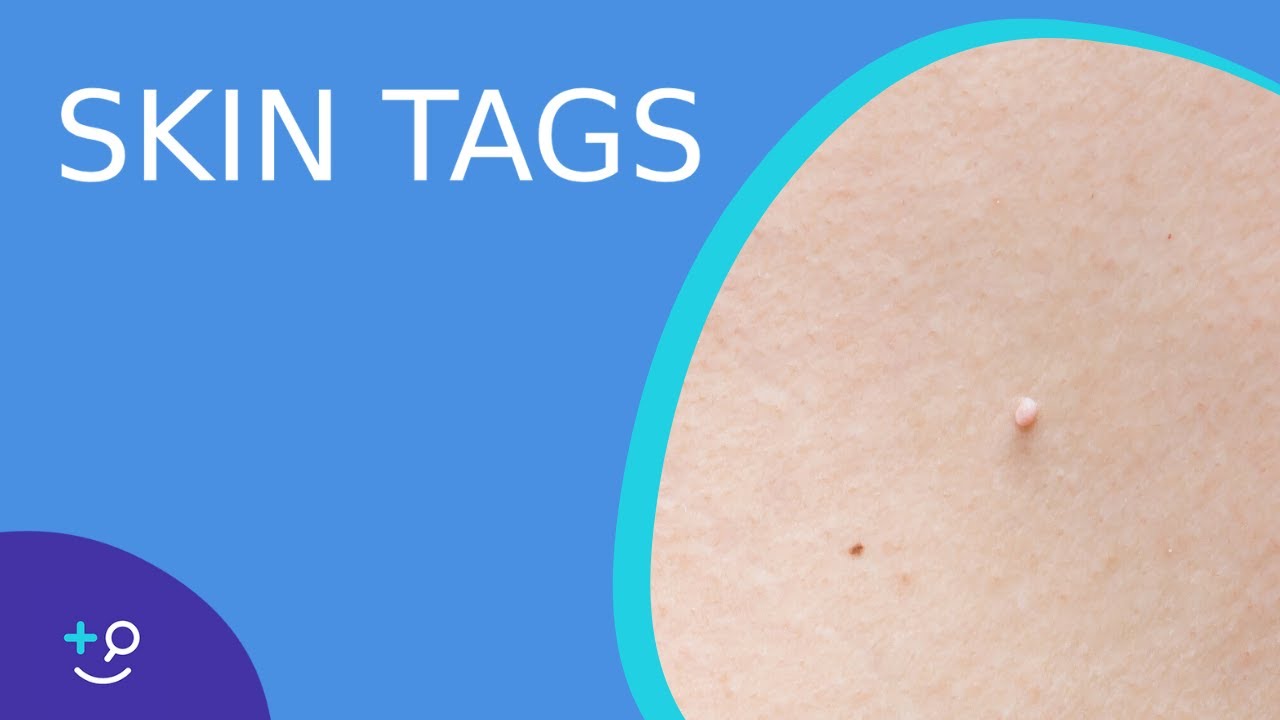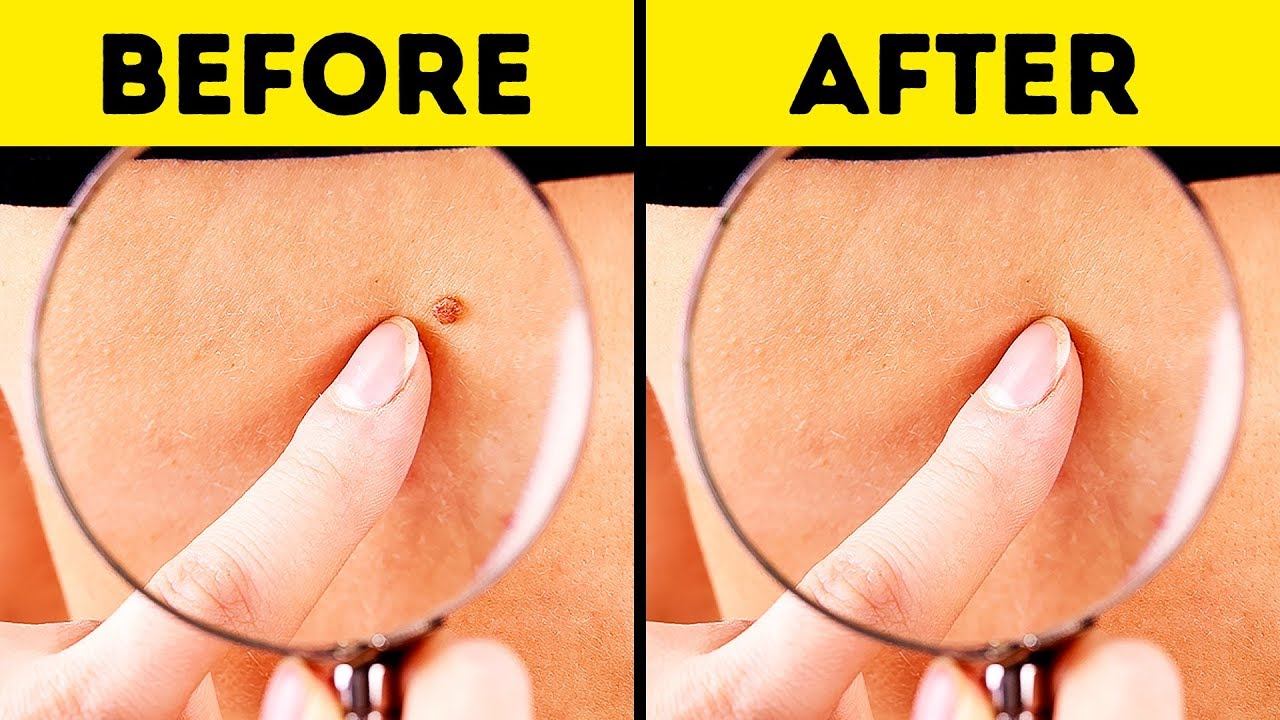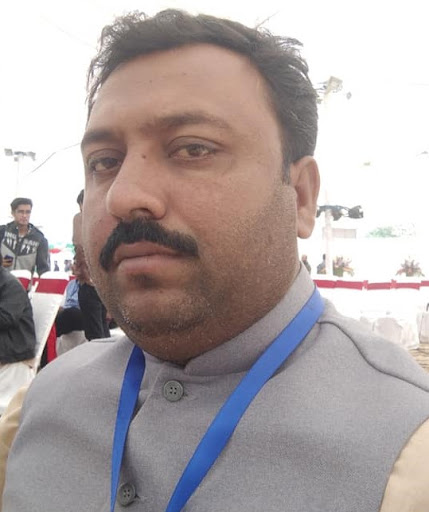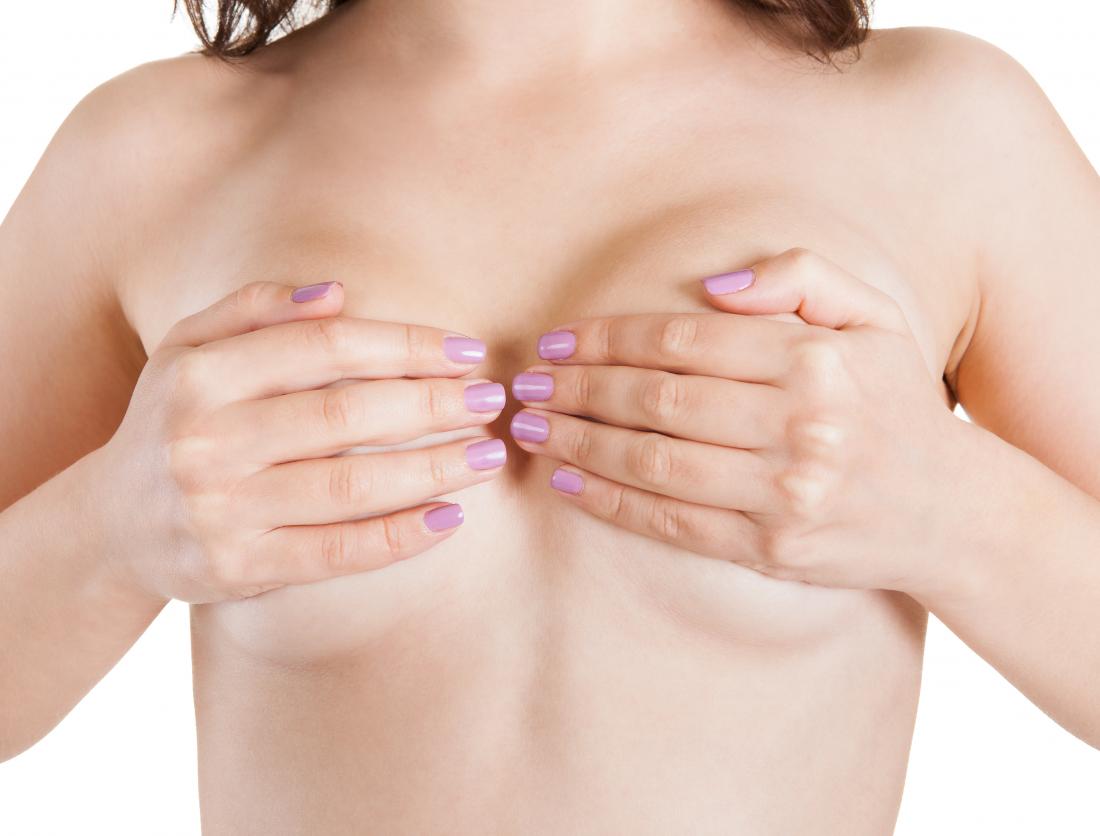Skin Tag On Nipple - Should You Be Worried?
Skin tags are little, fleshy growths that can occur anywhere on the body. They pose no health risks, although they can be an annoyance. No matter how many skin tags you end up with, they are completely harmless.
Author:Suleman ShahReviewer:Han JuJan 06, 2025171.7K Shares2.4M Views

Skin tags are little, fleshy growths that can occur anywhere on the body.
No matter how many skin tags you end up with, they are completely harmless.
Skin tags are common on the nipple because they can develop anywhere on the body, including in the breast area.
The rubbing together of wrinkles in the skin is what gives rise to them.
Skin tags have a diameter of between one millimeter and one centimeter and are attached to the skin by a thin, pliable stalk of flesh.
They may be unpleasant and painful in the nipple even if they don't care about it.
Is There Any Risk Of Having A Skin Tag On Nipple?
For a woman, waking up to find a skin tag on her breast for the first time can be a terrifying experience.
Even though skin tags on the nipple are harmless, they can be annoying because they rub against underwear and clothing that fits closely.
The vast majority of women would like to have it removed because of the emotional distress, embarrassment, and physical agony it causes, especially in romantic relationships.
Also, you should be extra careful if you do something that could make your skin tag hurt.
If you don't watch how you sleep, you might lightly rub your skin tag flat on the mattress.
A common problem for new mothers is breast skin tags.
Breastfeeding may be impossible unless the skin tag is removed.

Skin Tags - What they are and how to treat them
Causes Of Skin Tag On Nipple
You know quite well that skin tags tend to appear in areas of friction.
Multiple factors contribute to the formation and growth of skin tags.
A woman's weight is one of these factors to consider.
One's propensity to develop skin tags is proportional to their body mass index (BMI), since extra fat causes the skin to fold more deeply, increasing the likelihood of skin friction.
Nipple skin tags are commonly found on women because of the many ways the skin can cause friction and thus strain.
Nipple skin tags are rather prevalent in pregnant women.
In most cases, skin tags will continue to grow.
Due to the bloated and enlarged stomach, the breast and stomach might rub against each other, leading to skin tags.
For this reason, skin tags in the breast typically appear under the nipple rather than on it.
When a baby suckles on the nipple, its mouth is constantly rubbing against the breast.
This can cause skin tags to form on the breasts.
Sucking on skin tags irritates and makes them worse over time.
This could cause bigger problems for nursing moms and make sucking the nipple unhealthy for babies in the long run.
A skin tag may form under a younger woman's breast from constant friction.
Friction can develop if the nipple rubs against ill-fitting clothing or a bra that is too small.
Nipple piercings are another common cause of skin tags.
It's not a good idea to wear a bra over a pierced nipple since the bra and the piercing could cause irritation.
Skin tags will develop and the nipple will sting, making an already difficult situation even worse.
Get Rid Of Skin Tag On Nipple
Tags on the skin are completely safe and non-threatening. Nonetheless, they can be quite annoying.
Skin tags, in general, are ugly, and more so when they appear in unexpected places.
Because of this, many people opt to have it surgically removed rather than maintain it.
Most of the time, a skin tag on the breast can be taken off by the person who has it.
There are several options for getting rid of a skin tag on the nipple, including self-care and medical intervention.
In particular, if there are many skin tags that need to be removed, the total price might add up quickly.
While it may seem risky, most women still opt to remove skin tags from their nipples on their own or with products available over the counter.
Since skin tags aren't harmful and can be removed without medical intervention, you can try remedies you find in your home.
Possibilities exist that you may complete this using supplies lying around the house.
At-home treatments work by gradually drying out the skin tag, which causes it to shrink and eventually fall off.
You will be done after that.
The following are some home remedies that can be used to get rid of a skin tag on your nipple.
Banana Peel
Banana peel is one of the best natural therapies for eliminating skin tags on the nipple.
Like the fruit itself, banana peels are good for your complexion.
It helps the skin tag dry out, making removal less of a hassle.
Cover the tag with a banana peel, or at least a piece of a peel.
Bandages are applied to both the skin tag and the banana peel.
Repeat the process nightly until the skin tag is gone.
Here's your chance to get rid of that skin tag and the pile of banana peels in your kitchen trash.

10 Effective Ways to Remove Skin Tags Naturally
Tea Tree Oil
Tea tree oil has antibacterial and antibiotic properties and is safe for topical application because it is an all-natural oil.
This method of treating your skin tag will take between 21 and 42 days.
Tea tree oil should be applied to a clean area.
After that, dab a small amount of oil onto the skin tag using circular motions.
Overnight, keep the skin tag covered with a bandage to keep it from becoming infected.
To completely get rid of the skin tag, you will need to repeat this procedure several times.
Vitamin E
Aging may contribute to skin tags.
Because vitamin E is an antioxidant that prevents wrinkles and keeps the skin healthy, placing liquid vitamin E over a skin tag may cause the growth to disappear in a couple of days.
This is because vitamin E fights wrinkles and maintains healthy skin.
You just need to massage the oil into the skin tag and the skin around it until the tag falls off.
Garlic
The anti-inflammatory properties of garlic contribute to a more radiant complexion.
Apply crushed garlic directly to the skin tag, wrap the area with a bandage, and leave it on for the night to eliminate the skin tag naturally.
Clean the area first thing in the morning. Repeat as necessary until the skin tag fades away.
Apple Cider Vinegar
You can also use apple cider vinegar to get rid of skin tags.
The vinegar in it helps the skin tag's lining cells break down and peel off.
In the same way that you would apply tea tree oil, dab some apple cider vinegar on the area.
But a bandage and 20–35 minutes of rest will do the trick.
It should then be washed in clean, warm water.
It will take multiple attempts to get rid of the skin tag.
Things To Note When Using Home Remedies
It's not always safe to use home remedies to remove skin tags.
Choosing the best method for removing a skin tag depends on a number of factors that are context-specific.
Home remedies should be avoided by women with particularly large or very lengthy skin tags.
Visit a doctor and let him or her advise you on what to do next.
If a skin tag on a woman's nipple is painful, bleeding, and itchy, she shouldn't touch it until she's washed her hands to prevent spreading infection.
Don't risk infection or further irritation to your skin tag by trying out any homemade cures.
There may be a more serious problem at play if the bleeding persists.
Surgical Procedures For The Removal Of Skin Tags
Skin tags are frequently removed by surgery as an outpatient treatment.
Depending on the skin tag's size and location, your doctor may recommend one of the following treatments after numbing the region with a local anesthetic:
- Surgery:The doctor will use surgical scissors to cut the tag off where it attaches to the skin. Bandages or stitches can be required, depending on the skin tag's size and placement.
- Ligation:Sometimes moles and skin tags can be removed from the affected area by using surgical thread to sever the blood supply.
- Electrocautery:Your dermatologist will apply a fine mist of liquid nitrogen to the skin tag, which will cause the growth to freeze and fall off.
- Cryosurgery:Your dermatologist will apply a fine mist of liquid nitrogen to the skin tag, which will cause the growth to freeze and fall off.
- Cauterization:Your dermatologist will remove the skin tag by applying heat to it.
Preventing Skin Tag On Nipple
It's better to avoid problems than to try to fix them later.
It is possible to halt development just as much as it is possible to spur it up.
Just like moles, skin tags can be avoided in the first place.
Here are some things you can do to keep skin tags from showing up in the nipple area.
Dieting And A Healthy Way Of Life
Obesity causes a lot of skin creases, which cause skin tags because they rub against each other all the time.
A pregnant woman’s protruding tummy can rub on her breast, causing a skin tag.
Because skin tags are linked to obesity, it is best to maintain a healthy weight.
Whether you’re an expectant mother or not, being in shape is a way of life and a decision, not merely a need to avoid a skin tag.
Skin tags have been identified as pre-diabetic signs in medical investigations.
For this reason, overweight people are more likely to get skin tags.
Applying Powder To Reduce Friction
One way to stop a skin tag from growing is to use powders that reduce friction so that the skin and the nipple don't rub against each other at all.
If you want to avoid getting a skin tag on your nipple, you should apply antibiotic powder to your chest and breasts before putting on your bra or shirt.
This will help keep the area clean.
Stop Wearing Clothing That Is Too Tight
Tight clothes, like dresses, can be uncomfortable because they cut into your skin.
A skin tag can form when skin rubs on skin.
Put on something loose, like a blouse, to avoid this situation.
Other than that, make sure you're always wearing a supportive bra that's the right size.
In a manner similar to nipple piercings, jewelry can also be used to make skin tags that rub against your skin.
People Also Ask
Can You Get Skin Tags On Your Nipples?
Because growths in this area don't happen very often, benign tumors of the nipple, like FEP (also called acrochordon, skin tag, and soft fibroma), can be hard to spot.
Why Do Skin Tags Grow On Nipples?
When skin folds rub against one another, such as in the neck, under the breasts, or in the armpits, or even when you wipe your eyes too much, skin tags frequently develop.
Can Skin Tags On Breasts Be Cancerous?
Skin tags, which are otherwise harmless growths, are composed of collagen, a protein found all over the body, and blood vessels.
A skin tag does not need medical attention. It's not impossible for a dangerous tumor to seem like a harmless skin tag.
Conclusion
Most skin tags on the nipples are painless and harmless, so they don't need to be treated unless they become itchy.
If a skin tag does not respond to therapyat home, bleeds, or continues to grow, you should make an appointment with your doctor.
Home treatments and over-the-counter medications can be effective solutions that are also economical.
Several methods can be used to remove a skin tag without causing too much pain or leaving a scar.

Suleman Shah
Author
Suleman Shah is a researcher and freelance writer. As a researcher, he has worked with MNS University of Agriculture, Multan (Pakistan) and Texas A & M University (USA). He regularly writes science articles and blogs for science news website immersse.com and open access publishers OA Publishing London and Scientific Times. He loves to keep himself updated on scientific developments and convert these developments into everyday language to update the readers about the developments in the scientific era. His primary research focus is Plant sciences, and he contributed to this field by publishing his research in scientific journals and presenting his work at many Conferences.
Shah graduated from the University of Agriculture Faisalabad (Pakistan) and started his professional carrier with Jaffer Agro Services and later with the Agriculture Department of the Government of Pakistan. His research interest compelled and attracted him to proceed with his carrier in Plant sciences research. So, he started his Ph.D. in Soil Science at MNS University of Agriculture Multan (Pakistan). Later, he started working as a visiting scholar with Texas A&M University (USA).
Shah’s experience with big Open Excess publishers like Springers, Frontiers, MDPI, etc., testified to his belief in Open Access as a barrier-removing mechanism between researchers and the readers of their research. Shah believes that Open Access is revolutionizing the publication process and benefitting research in all fields.

Han Ju
Reviewer
Hello! I'm Han Ju, the heart behind World Wide Journals. My life is a unique tapestry woven from the threads of news, spirituality, and science, enriched by melodies from my guitar. Raised amidst tales of the ancient and the arcane, I developed a keen eye for the stories that truly matter. Through my work, I seek to bridge the seen with the unseen, marrying the rigor of science with the depth of spirituality.
Each article at World Wide Journals is a piece of this ongoing quest, blending analysis with personal reflection. Whether exploring quantum frontiers or strumming chords under the stars, my aim is to inspire and provoke thought, inviting you into a world where every discovery is a note in the grand symphony of existence.
Welcome aboard this journey of insight and exploration, where curiosity leads and music guides.
Latest Articles
Popular Articles
